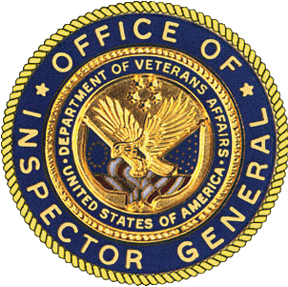Without Effective Controls, Public Disability Benefits Questionnaires Continue to Pose a Significant Risk of Fraud to VA
Report Information
Summary
In this legislatively mandated review, the OIG sought to determine whether VBA continues to use updated public disability benefits questionnaires and, because public questionnaires may pose a significant risk of fraud without adequate internal controls, to examine VBA’s oversight of their use. Publicly available questionnaires are to be completed by veterans’ non-VA medical providers, whereas internal questionnaires are completed by VA medical providers.
The OIG team reviewed a sample of 100 claims for benefits completed from January 1 through December 31, 2022, supported by at least one public questionnaire. These 100 claims contained 207 public questionnaires because some claims had more than one questionnaire submitted. The team developed its own indicators of fraud risk because VBA lacked them.
The team found that VBA generally accepted and used public questionnaires when determining entitlement to benefits. However, VBA does not have effective controls to mitigate the risk of using fraudulent forms to decide benefits. On the basis of its sample, the team estimated that of the 31,900 claims completed during the review period, approximately 22,000 claims (69 percent) had one or more fraud risk indicators. Although public questionnaires with fraud risk indicators show only possible instances of fraud, the team’s projections suggest that the monetary risk to VA could be approximately $390 million.
The OIG made five recommendations to the under secretary for benefits, chief among them to continue developing a system for digitally capturing, analyzing, and monitoring public questionnaires to identify inauthentic or fraudulent questionnaires, and work with the Compensation Service to develop policies for reviewing and remediating any such public questionnaires identified. Other recommendations were to have outside providers certify that they completed the questionnaires under penalty of perjury, and to enhance guidance and training for claims processors.
Direct the Office of Financial Management to continue to develop a system for digitally capturing, analyzing, and monitoring public questionnaires to identify inauthentic or potentially fraudulent questionnaires and work with the Compensation Service to develop policies for reviewing and remediating any such public questionnaires identified.
Have the Medical Disability Examination Office update the examiner certification and signature section found in public questionnaires to include that the form is being completed under the penalty of perjury and to ask examiners to list any organizations that requested they complete the examinations on the claimant’s behalf.
Instruct the Compensation Service to provide claims processors guidance in the procedures manual on how to identify a potentially fraudulent public questionnaire, and provide the steps they should take when they suspect that a public questionnaire may be inauthentic or potentially fraudulent.
Require the Compensation Service to inform claims processors as part of the public questionnaire review process that they have a duty to review and weigh all the evidence of record, including public questionnaires, and that they have the responsibility to assign low or no probative value if they have reason to suspect that the public questionnaire is inauthentic or potentially fraudulent.
Direct the Veterans Benefits Administration to develop and provide training on authentication and fraud, including training related to public questionnaires, to provide claims processors with the knowledge to identify inauthentic or potentially fraudulent public questionnaires, and include what steps claims processors should take when they make that determination.
